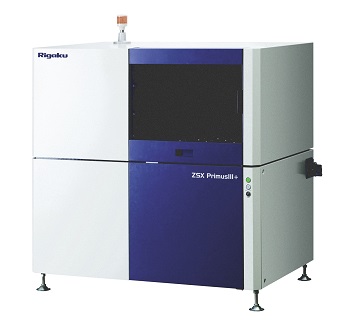Rigaku Corporation today announced a new method for silicate rock analysis by wavelength dispersive X-ray fluorescence (WDXRF) spectrometry.
Rigaku Application Note XRF 1019 demonstrates the low dilution fusion method to determine chemical concentrations in silicate rocks using the Rigaku ZSX Primus III+ WDXRF spectrometer.

The report includes details for sample preparation, method calibration and repeatability, and describes an X-ray fluorescence spectrometry (XRF) method applied to silicate rock samples that can produce a wide range of determinations, from major elements to trace elements, with high accuracy.
Geochemical analysis of silicate rocks is an important part of modern petrology. The fusion method is commonly used for quantitative analysis of geological samples, eliminating sample heterogeneity caused by various rock-forming minerals. Conventional fusion methods have been widely used for the determination of major element concentration because dilution by flux significantly reduces sensitivities of trace elements. The pressed pellet method is, therefore, applied to trace element analysis. Applying two preparation methods for each sample is inefficient and time consuming. The low dilution fusion method has been developed to improve sensitivity of trace elements and can help determine the concentrations of both trace elements and major elements more accurately than by a fused bead alone. The new report describes the low dilution fusion method for determining chemical concentrations for both major and trace elements in silicate rocks using the ZSX Primus III+ spectrometer.
The standard samples used for calibration for the method were 14 certified reference materials supplied by the Geological Survey of Japan. The standards were composed of basic to acidic igneous rocks. The ZSX Primus III+, a floor-standing sequential WDXRF spectrometer equipped with a 3 kW Rh target X-ray tube, was used to measure both major and trace elements. The ZSX Primus III+ is designed to offer advantages in high spectral resolution and high sensitivity for light elements, and its flexibility provides multi-purpose utility for a wide range of applications. Trace elements were all measured with a primary beam filter to improve detection limits. Matrix correction coefficients were theoretically calculated by the built-in fundamental parameters (FP) software.
Calibrations shown in the report show excellent accuracy, and 20 measurements were performed with certified reference material to demonstrate instrumental precision.
The results demonstrate that X-ray fluorescence spectrometry is a rapid, precise and accurate method that meets the requirements of silicate rock analysis. It can also minimize the requirement of analytical skill and save analysis time in sample preparation compared to other spectroscopic methods. An X-ray fluorescence spectrometer with high reliability and stability, such as the ZSX Primus III+ analyzer, is shown to be an essential instrument for determining the chemical properties of geological samples in research laboratories and institutes.
A copy of this report may be requested at: http://www.rigaku.com/products/xrf/primus3/app1019
About Rigaku
Since its inception in Japan in 1951, Rigaku has been at the forefront of analytical and industrial instrumentation technology. Rigaku and its subsidiaries form a global group focused on life sciences and general purpose analytical instrumentation. With hundreds of major innovations to its credit, Rigaku and its subsidiary companies are world leaders in the fields of small molecule and protein crystallography, X-ray spectrometry and diffraction, X-ray optics, as well as semiconductor metrology. Rigaku employs over 1,100 people in the manufacture and support of its analytical equipment. Its products are in use in more than 70 countries – supporting research, development, and quality assurance activities. Throughout the world, Rigaku continuously promotes partnerships, dialog, and innovation within the global scientific and industrial community.